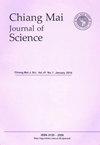鸭舌草(Lemna)菌株的筛选、生物量生产和蛋白质含量改良研究
IF 0.6
4区 综合性期刊
Q3 MULTIDISCIPLINARY SCIENCES
引用次数: 0
摘要
豚草正在成为一种新兴的植物蛋白来源,因为与其他主要作物相比,它的生产方式可能更高效、更环保。筛选对于挖掘所需的性状至关重要。我们对基因库中现有的 32 个 Lemna 品种和加入品进行了筛选。筛选分为两步,第一步是在 1/5 浓度的霍格兰溶液(HS)中培养一周。根据蛋白质百分比,将最好的三个菌株培养成两组铵态氮源和硝态氮源。根据生物量和蛋白质含量,确定 D0158 菌株为最佳菌株。然后,对菌株进行了五项不同参数的优化。在我们的研究中,我们发现光周期越长,生物量积累越多,蛋白质百分比越低。粗蛋白增加了 6.51%,从 30.97% 增加到 33.13%,干生物量增长率增加了 54.48%,从 4.35 克/平方米/天增加到 6.72 克/平方米/天。研究结果可用于改进浮萍室内栽培系统。此外,该方案还可用于其他浮萍品系的类似用途。本文章由计算机程序翻译,如有差异,请以英文原文为准。
Investigation on Selection, Improvement of Biomass Production and Protein Content in Duckweeds (Lemna Strains)
Duc kweeds are becoming an emerging plant protein source as it may be produced in a more efficient and eco-friendly manner than other major crops. Screening is essential for tapping the desired traits. We conducted the screening on 32 Lemna species and accessions available in the Gene Bank. It follows two steps screening, primary screening involved culturing in 1/5 strength Hoagland Solution (HS) for one week. Based on protein %, the best three strains were cultured two sets ammonium and nitrate nitrogen source. Based on both biomass and protein content, D0158 strain was identified as the best. Then, the strain was optimized in five different parameters. In our study, we found that a longer photoperiod resulted in greater biomass accumulation and a lower percentage of protein. There was a 6.51% increase in crude protein, rising from 30.97% to 33.13% and dry biomass growth rate increase of 54.48% from 4.35 to 6.72 g/m2/d. The findings can be used to enhance the duckweed indoor cultivation system. Additionally, this protocol can be applied to other duckweed strains for similar purposes.
求助全文
通过发布文献求助,成功后即可免费获取论文全文。
去求助
来源期刊

Chiang Mai Journal of Science
MULTIDISCIPLINARY SCIENCES-
CiteScore
1.00
自引率
25.00%
发文量
103
审稿时长
3 months
期刊介绍:
The Chiang Mai Journal of Science is an international English language peer-reviewed journal which is published in open access electronic format 6 times a year in January, March, May, July, September and November by the Faculty of Science, Chiang Mai University. Manuscripts in most areas of science are welcomed except in areas such as agriculture, engineering and medical science which are outside the scope of the Journal. Currently, we focus on manuscripts in biology, chemistry, physics, materials science and environmental science. Papers in mathematics statistics and computer science are also included but should be of an applied nature rather than purely theoretical. Manuscripts describing experiments on humans or animals are required to provide proof that all experiments have been carried out according to the ethical regulations of the respective institutional and/or governmental authorities and this should be clearly stated in the manuscript itself. The Editor reserves the right to reject manuscripts that fail to do so.
 求助内容:
求助内容: 应助结果提醒方式:
应助结果提醒方式:


